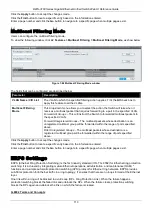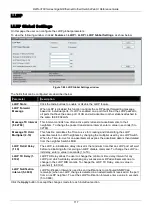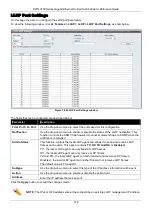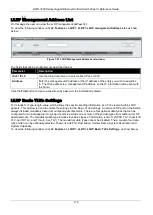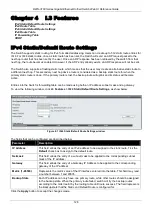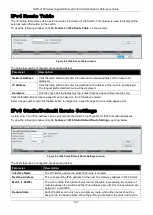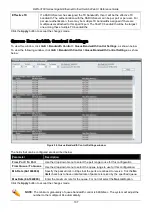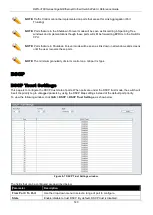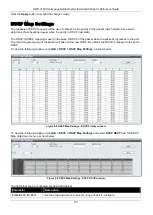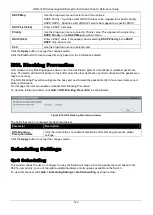
DWS-3160 Series Gigabit Ethernet Unified Switch Web UI Reference Guide
127
IPv4 Route Table
The IP routing table stores all the external routes information of the Switch. This window is used to display all the
external route information on the switch.
To view the following window, click
L3 Features > IPv4 Route Table
, as show below:
Figure 8-2 IPv4 Route Table window
The fields that can be configured are described below:
Parameter
Description
Network Address
Click the radio button and enter the destination network address of the route to be
displayed.
IP Address
Click the radio button and enter the destination IP address of the route to be displayed.
The longest prefix matched route will be displayed.
Hardware
Tick the check box to display only the routes that have been written into the chip.
Click the
Find
button to locate a specific entry based on the information entered.
Enter a page number and click the
Go
button to navigate to a specific page when multiple pages exist.
IPv6 Static/Default Route Settings
A static entry of an IPv6 address can be entered into the Switch’s routing table for IPv6 formatted addresses.
To view the following window, click
L3 Features > IPv6 Static/Default Route Settings
, as show below:
Figure 8-3 IPv6 Static/Default Route Settings window
The fields that can be configured are described below:
Parameter
Description
Interface Name
The IP Interface where the static IPv6 route is created.
Nexthop Address
The corresponding IPv6 address for the next hop Gateway address in IPv6 format.
Metric (1-65535)
The metric of the IPv6 interface entered into the table representing the number of
routers between the Switch and the IPv6 address above. Metric values allowed are
between 1 and 65535.
Backup State
Each IP address can only have one primary route, while other routes should be
assigned to the backup state. When the primary route failed, the switch will try the

